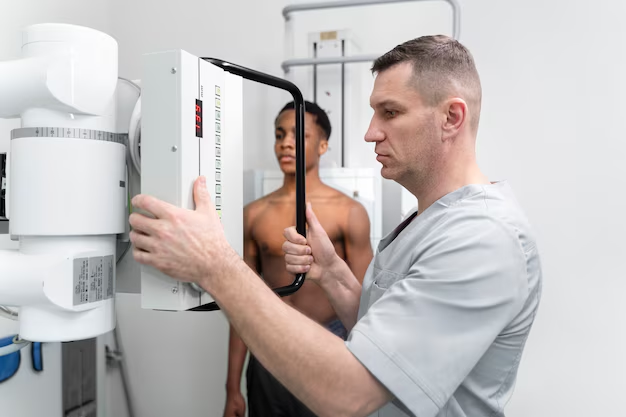Finding the Perfect Temperature: How to Optimize Your Refrigerator and Freezer Settings
In an age where food preservation is more important than ever, understanding the ideal temperatures for your refrigerator and freezer can make a significant difference in your household. From extending the freshness of your favorite produce to ensuring the safety of perishable goods, having the right settings is crucial. Yet, many find themselves asking, "What are the best temperatures for my refrigerator and freezer?" Fear not, as we're about to delve into everything you need to know to keep your food fresh and your appliances running efficiently 📊.
The Ideal Temperatures for Refrigerators and Freezers
Optimal Settings Explained
Finding the best temperature for refrigerators and freezers isn't just about compliance with guidelines or ensuring your milk doesn't spoil. It's a balance of efficiency, food safety, and reducing waste.
Refrigerators: The perfect temperature for a refrigerator should be at or slightly below 40°F (approximately 4°C). This temperature slows down the growth of most bacteria, keeping your food safe without freezing it.
Freezers: For freezers, settings are more forgiving but no less critical. The standard recommendation is 0°F (-18°C), ensuring all food items remain thoroughly frozen.
Importance of Maintaining Proper Temperatures
Why is it so important to maintain these temperatures? Bacteria control and food preservation are at the heart of it. The right settings not only help keep foods fresh longer but also prevent the growth of harmful microorganisms that can lead to foodborne illnesses.
Prolonged Freshness: Consistency in temperature keeps food at peak freshness, taste, and nutritional quality.
Energy Efficiency: Appliances set at optimal temperatures use less energy, translating to cost savings on your electricity bills.
Signs Your Temperatures May Be Off
How can you tell if your fridge or freezer isn't at the ideal temperature? Here are some indicators:
- Refrigerator: Food spoils quicker than usual, milk spoils faster, or greens and vegetables come out wilted or frozen.
- Freezer: When ice cream is too hard to scoop, or if thin ice layers form on packaged foods, it might indicate temperature settings are not correct.
Practical Tips for Setting and Maintaining Refrigerator and Freezer Temperatures
Easy Steps to Check and Adjust Settings
- Use a Thermometer: Place it in the central part of the unit for the most consistent reading. Leave it for at least 24 hours for the best results.
- Adjust Settings in Small Increments: If adjustments are needed, change settings by one degree at a time, allowing 24 hours for the unit to come to the new temperature.
- Regularly Clean and Maintain: Clean coils for better efficiency, and ensure the door seals are intact for optimal cooling performance.
Common Mistakes to Avoid
- Overstocking or Understocking: Both can cause temperature fluctuations. Keep contents balanced for optimal air circulation.
- Blocking Air Vents: Ensure that vents are free from obstructions to allow proper airflow.
- Ignoring Door Seals: A tight seal is crucial to maintain temperatures efficiently. Fix or replace seals immediately if damaged.
Enhancing Energy Efficiency
How Proper Temperature Settings Save Energy
Setting your refrigerator and freezer to their recommended temperatures not only helps with preserving food but also plays a significant role in energy consumption:
- Efficiency: Proper temperatures ensure the compressor doesn't overwork, preventing excessive energy use.
- Longevity: Less strain on the cooling systems by maintaining appropriate temperatures extends the life of your appliance.
Additional Energy-Saving Tips
- Keep Doors Closed: Minimize the amount of time the refrigerator door is open to prevent temperature loss.
- Regular Defrosting: For freezers without a frost-free feature, defrost regularly to maintain efficiency.
Different Types of Refrigerators and Temperature Management
Not all refrigerators are the same, and the type you own can influence temperature management and setting adjustments.
Variations Across Refrigerator Types
- Top-Freezer Models: Typically easy to manage with clear temperature settings. Ensure even air circulation by not overstacking.
- Bottom-Freezer Models: Convenient for households prioritizing fresh food, yet watch the freezer compartment for uniform cold distribution.
- Side-by-Side Models: Pay extra attention to maintaining a balance between the refrigerator and freezer compartments, as air circulation can sometimes be limited.
Special Features and Their Impact on Temperature
- Smart Refrigerators: These often come with advanced features like temperature sensors and Wi-Fi connectivity for remote monitoring.
- Dual Zone Controls: Allows separate settings for different compartments, offering more precise temperature management.
A Quick Temperature Setting Reference
To recap, here's a skimmable list highlighting the essentials for refrigerator and freezer temperature settings:
📌 Refrigerators should be set at: 37°F to 40°F (3°C to 4°C)
❄️ Freezers should be set at: 0°F (-18°C)
🔄 Check temperature readings regularly with a separate thermometer for the most accurate results.
🛠️ Routine maintenance like cleaning coils and checking door seals helps maintain efficiency.
🌬️ Avoid overpacking to enable good air circulation for consistent cooling.
Conclusion: A Small Change for Big Benefits
Ensuring your refrigerator and freezer are set at the correct temperatures might seem trivial, but it's a powerful tool for saving money, preventing food waste, and protecting your health. A well-maintained appliance works efficiently, lasts longer, and contributes to a greener footprint by reducing energy consumption. Make these small adjustments today and notice the positive changes they bring to your home. 🍏🥶
